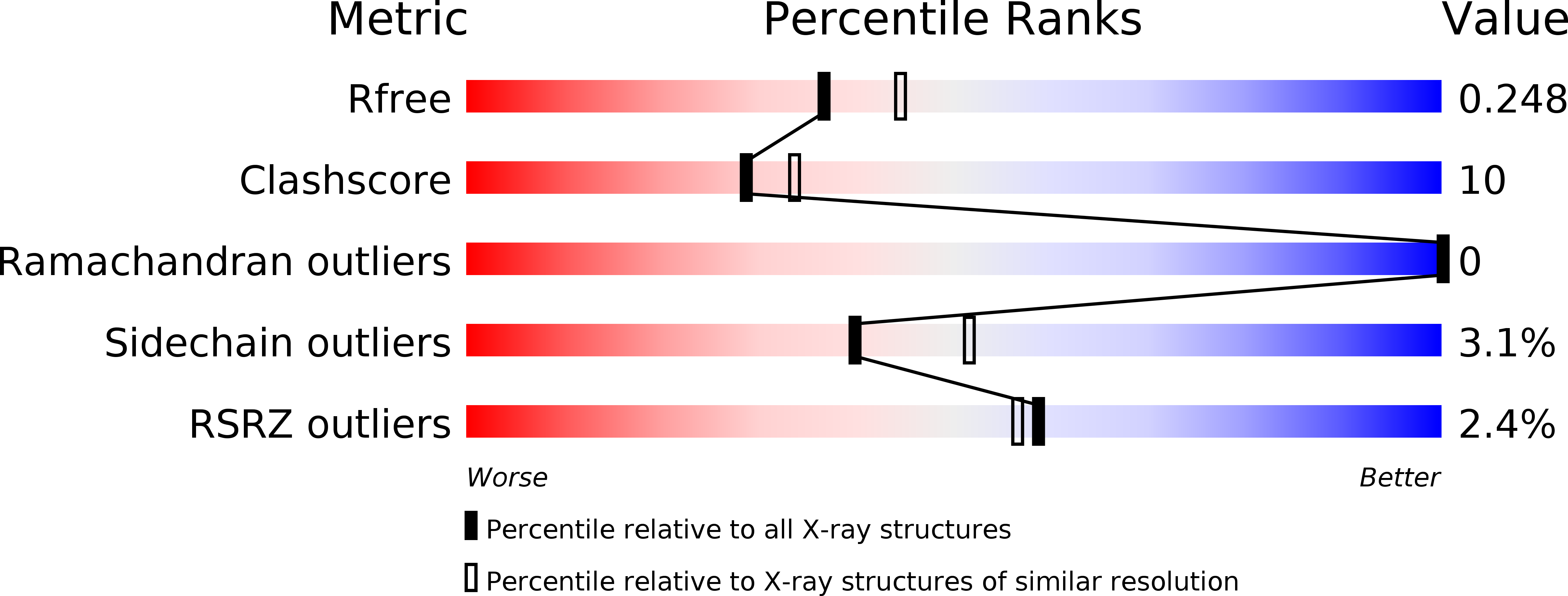
Deposition Date
2017-08-01
Release Date
2017-12-20
Last Version Date
2024-01-17
Entry Detail
PDB ID:
5OMQ
Keywords:
Title:
Ternary complex of 9N DNA polymerase in the replicative state with three metal ions in the active site
Biological Source:
Source Organism:
Thermococcus sp. (strain 9oN-7) (Taxon ID: 103799)
synthetic construct (Taxon ID: 32630)
synthetic construct (Taxon ID: 32630)
Host Organism:
Method Details:
Experimental Method:
Resolution:
2.20 Å
R-Value Free:
0.24
R-Value Work:
0.19
R-Value Observed:
0.19
Space Group:
P 21 21 21


